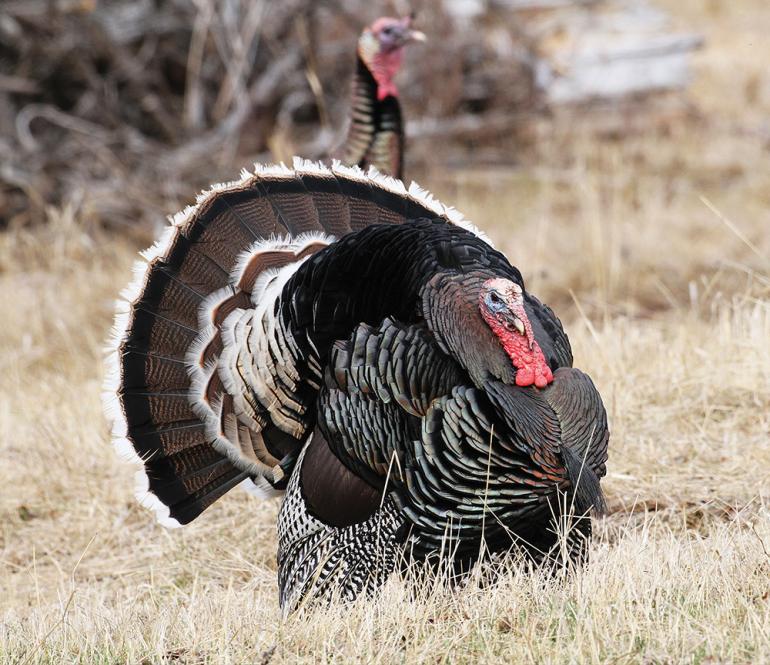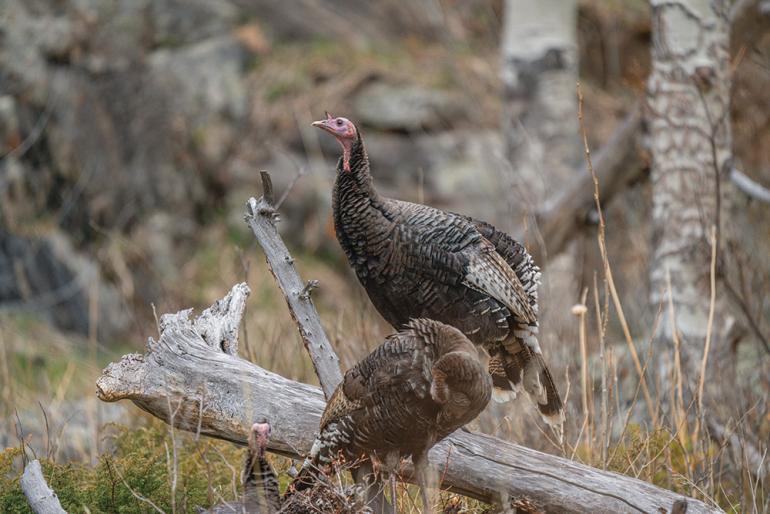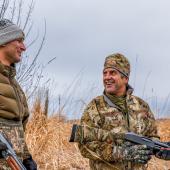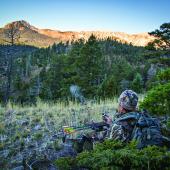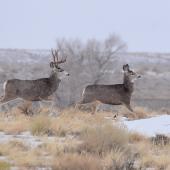Tommy Boy
Trottin' around for turkeys.
The first turkey I ever shot in Montana wasn’t planned. I was walking up a mountain to the snowline searching for spring black bears, when I came across a swath of turkey tracks. Not one to pass up an opportunity, I turned and hustled back to my truck, where I grabbed the shotgun and turkey call I kept stowed away just in case. I got back to the spot, made a few soft calls and an answering gobble exploded right beside me. I barely had time to flop down in the brush before two red heads popped up from behind a snowbank at 30 yards. I watched the two gobblers walk over the bank before raising my gun and squeezing the trigger. As the lead bird flopped down in the snow, I could only think one thing: Man, that happened fast!
I watched the two gobblers walk over the bank before raising my gun and squeezing the trigger. As the lead bird flopped down in the snow, I could only think one thing: Man, that happened fast!
Habitat
Merriam’s turkeys were introduced to Montana from Colorado in 1954. Since their introduction, the birds have thrived in the state’s rich landscape, with populations rising to over 120,000 birds in the 70 years since their arrival. This gives Montana turkey hunters plenty of opportunities to bring home a big tom turkey, so long as they know where to look and how to hunt for one.
Wild turkeys can live in a variety of habitats, from lush ridgelines to fertile river bottoms. In fact, anywhere there’s a lot of dense brush and other cover with close access to open ground and water is likely to hold a turkey or two. Their varied diet consists of insects, grasses, berries, and seeds; however, turkeys are particularly fond of grain, corn, and other crops. A great way to find birds is to look along the edges of hay fields, corn fields, and other agricultural areas.
Behavior
Wild turkeys are a lot different from the waddling domestic birds you see on poultry farms. They have keen vision and hearing, and will fly or run away in an instant as soon as they sense a predator approaching. This extreme wariness can make wild turkeys very difficult to approach. The way to outwit these birds is by putting yourself in the right place at the right time.
Generally, wild turkeys move out in the open to feed and socialize in the early morning. They eat and gather throughout the day before slowly working their way back to the closest patch of trees to roost in the evening. Hunters looking for a turkey can position themselves either in their feeding areas or on forest edges to ambush the birds as they move to and from their roosting and feeding areas.
Spring vs. Fall
Spring is the best time to hunt turkeys in Montana. It’s the mating season, and the normally overly-cautious toms are much more reckless as they search for hens. It’s a great time to both call turkeys and to use decoys to draw the birds within firing range.
Fall turkey hunting is a bit more difficult. Turkeys are much less vocal and less responsive to calling during this time. Most fall turkey hunters rely on spot-and-stalk and ambush techniques to get the job done.
Gear
Depending on the season and hunting district, turkeys can be hunted with a bow, rifle, or shotgun. Shotgun hunting is the most popular method, with a full-choke 12-gauge loaded with #2 or #4 shot being the preferred choice of most turkey hunters. Aside from your armament, you’ll also need a good set of camouflage clothing to get in range of the spooky birds.
Regs
Turkey hunting in Montana is highly regulated and very regionally specific. Restrictions vary annually based on regional populations and harvest numbers, so be sure to check current FWP regulations before heading out to bag your bird.
Flu Season
by Jamie Rankin
Just like humans, birds can catch the flu, too—and for them, it can be just as serious. Highly pathogenic avian influenza, or bird flu, is caused by the H5N1 strain of influenza and spreads rapidly through contaminated water and feces. The virus infects the cells lining a bird’s nose, throat, and lungs, leading to respiratory failure, inflammation, organ failure, and internal bleeding. Since its detection in 1996, H5N1 has affected wild and domestic birds globally, with severe outbreaks resulting in substantial mortality among bird species that congregate in large numbers—e.g. waterfowl such as geese, ducks, and swans.
Montana’s first confirmed case was in April 2022, with recent 2024 cases in Gallatin, Big Horn, Broadwater, Flathead, and Jefferson counties. Bird-flu symptoms in wild birds include swelling around the head, neck, or eyes, as well as ruffled or discolored feathers, causing a bluish discoloration of the wattles or legs. If a bird seems to be circling, having difficulty flying, or appears sluggish or unresponsive, it may have bird flu.
Hunters should avoid handling sick birds and take precautions like wearing gloves and face coverings; washing hands, equipment, and surfaces; and cooking game meat to 165 degrees Fahrenheit to kill pathogens. Hunting dogs may also be at risk if they come into contact with infected waterfowl or contaminated environments, such as water, scat, or bird carcasses. Limit dogs’ exposure and keep a close eye on them following a hunt to ensure they are in normal health.
If you encounter clusters of sick or dead birds, report them to Montana Fish, Wildlife & Parks immediately. By following these simple guidelines, hunters, birdwatchers, and general recreationalists can help reduce the spread of bird flu and protect Montana’s wild and domestic bird populations for years to come.

